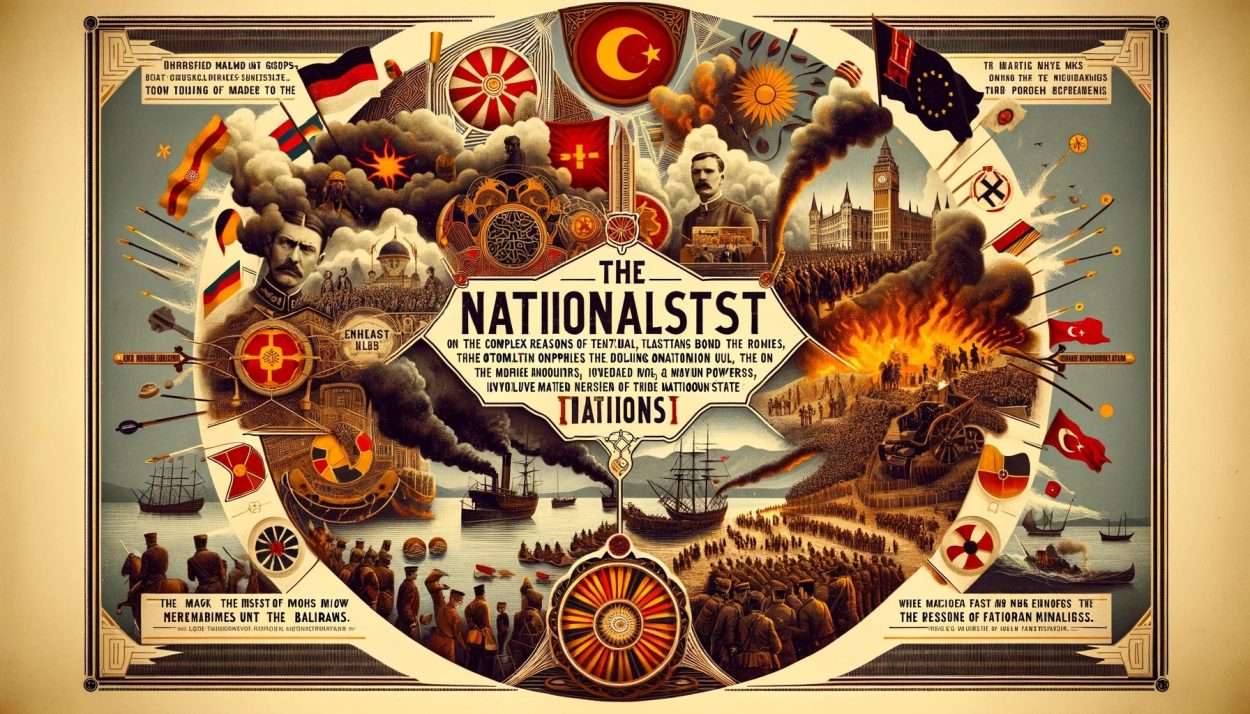
Rise of Nationalist Tensions in the Balkans: Precursor to World War I

Class 10th, Subject Social Knowledge, Chapter 1 – Nationalism in Europe
Essay question –
Why did nationalist tension arise in the Balkan region?
Answer
The Balkan region, often referred to as the “powder keg of Europe,” was a hotbed of nationalist tensions in the late 19th and early 20th centuries, leading up to World War I. Several factors contributed to the rise of these tensions, including ethnic diversity, the decline of the Ottoman Empire, great power rivalries, and the rise of nationalism. Here is a detailed explanation:
Ethnic Diversity
The Balkans were characterized by a rich tapestry of ethnic groups, including Serbs, Croats, Bosnians, Montenegrins, Albanians, Romanians, Bulgarians, and Greeks, among others. Many of these groups harbored nationalist aspirations for independence or greater autonomy, often leading to conflicts over territory and identity.
Decline of the Ottoman Empire
By the late 19th century, the Ottoman Empire, which had controlled much of the Balkans for centuries, was in decline. This weakening of Ottoman authority opened a vacuum of power that various nationalist movements sought to fill, often with the aim of establishing nation-states based on ethnic identity. The gradual retreat of the Ottoman Empire from the region, marked by losses in wars and the ceding of territory, encouraged local nationalist movements to pursue their goals more aggressively.
Great Power Rivalries
The Balkans became an arena for competition among Europe’s great powers, particularly Austria-Hungary, Russia, and to a lesser extent, Germany, Italy, and Britain. These powers had strategic and economic interests in the region and often supported different nationalist movements or governments to further their own aims, exacerbating local tensions. For example, Russia supported Slavic groups such as the Serbs, while Austria-Hungary aimed to prevent Slavic nationalism from undermining its empire, which included many Slavs.
Rise of Nationalism
The 19th century saw the rise of nationalism as a powerful ideology across Europe. In the Balkans, this took the form of movements seeking to create nation-states that reflected the region’s diverse ethnic compositions. The success of nationalist movements in other parts of Europe, such as Italy and Germany, inspired Balkan nationalists. However, given the region’s ethnic complexity, these aspirations often clashed, leading to internal and external conflicts.
Specific Incidents Leading to Tension
- The Bosnian Crisis (1908): Austria-Hungary’s annexation of Bosnia and Herzegovina angered Serbia and Russia, both of which had interests in the region. This significantly heightened tensions in the Balkans.
- Balkan Wars (1912-1913): The Balkan League’s initial success against the Ottoman Empire in the First Balkan War was followed by the Second Balkan War, where the allies turned against each other over territorial disputes. These wars not only changed the political landscape of the Balkans but also heightened nationalist fervor and distrust among the nations in the region.
Conclusion
Nationalist tensions in the Balkans were the result of a complex interplay of ethnic diversity, the decline of Ottoman authority, external interference by European powers, and the potent force of nationalism. These tensions not only led to numerous conflicts in the region itself but also contributed significantly to the outbreak of World War I, illustrating the dangerous potential of nationalism to ignite widespread conflict.